
Vineyards
John Sebastiano Vineyard
Sta. Rita Hills
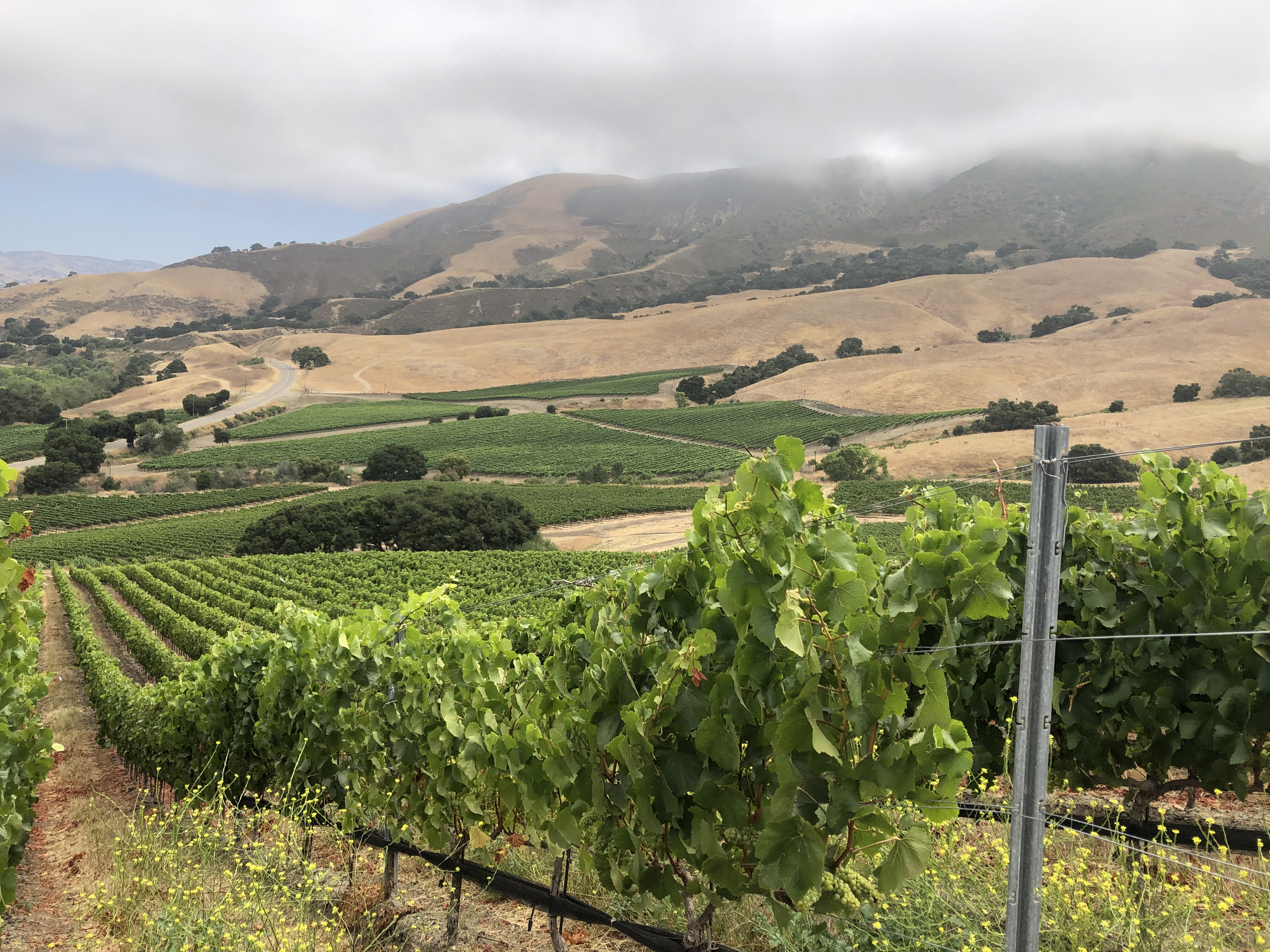 One of Sta. Rita Hills’ newest plantings, this 100-acre vineyard is situated on the eastern edge of the AVA and boasts numerous microclimates. At an elevation of 500 feet, the site is particularly exposed to the cool, westerly winds coming off the Pacific Ocean. These conditions combined with high density planting and careful clonal selection limits yields and berry size, resulting in rich, concentrated flavors.
One of Sta. Rita Hills’ newest plantings, this 100-acre vineyard is situated on the eastern edge of the AVA and boasts numerous microclimates. At an elevation of 500 feet, the site is particularly exposed to the cool, westerly winds coming off the Pacific Ocean. These conditions combined with high density planting and careful clonal selection limits yields and berry size, resulting in rich, concentrated flavors.
Fiddlestix Vineyard
Sta. Rita Hills
 Planted near the halfway-point of the Sta. Rita Hills on the north side of Santa Rosa Road, Fiddlestix sits just across from the historic Sanford & Benedict Vineyard. Fog usually lingers until mid-morning and the temperature rarely rises above 75, ensuring cool grapes throughout a lengthy day of sunshine. The soil is well-drained Gazos and Botella clay loam, loaded with chirt and Monterey shale, with 96 acres under vine. The blocks sourced for Ken Brown Wines are planted to the 667 and Pommard clones.
Planted near the halfway-point of the Sta. Rita Hills on the north side of Santa Rosa Road, Fiddlestix sits just across from the historic Sanford & Benedict Vineyard. Fog usually lingers until mid-morning and the temperature rarely rises above 75, ensuring cool grapes throughout a lengthy day of sunshine. The soil is well-drained Gazos and Botella clay loam, loaded with chirt and Monterey shale, with 96 acres under vine. The blocks sourced for Ken Brown Wines are planted to the 667 and Pommard clones.
Peake Ranch Vineyard
Sta. Rita Hills
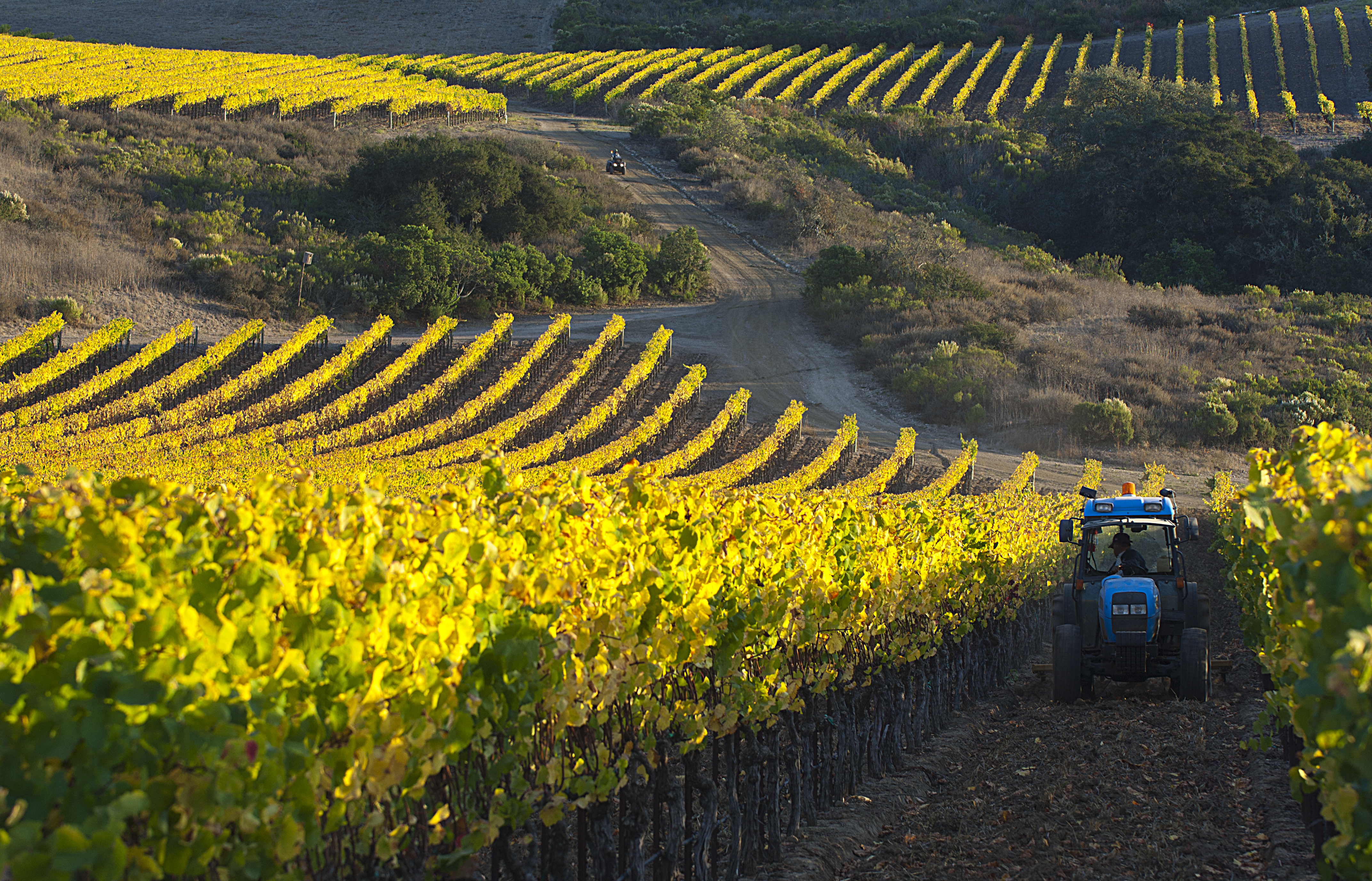 The Peake Ranch Vineyard is one of the newer vineyards planted at the eastern end of the Sta. Rita Hills AVA. This beautiful 50-acre estate is situated along a hill that gives the vines a unique combination of exposures to the cool breezes coming off the Pacific. Varietals planted include Pinot Noir, Chardonnay, Syrah and Grenache. This vineyard is known for its lushly textured red wines as well as for smooth and aromatic Chardonnays.
The Peake Ranch Vineyard is one of the newer vineyards planted at the eastern end of the Sta. Rita Hills AVA. This beautiful 50-acre estate is situated along a hill that gives the vines a unique combination of exposures to the cool breezes coming off the Pacific. Varietals planted include Pinot Noir, Chardonnay, Syrah and Grenache. This vineyard is known for its lushly textured red wines as well as for smooth and aromatic Chardonnays.
Radian Vineyard
Sta. Rita Hills
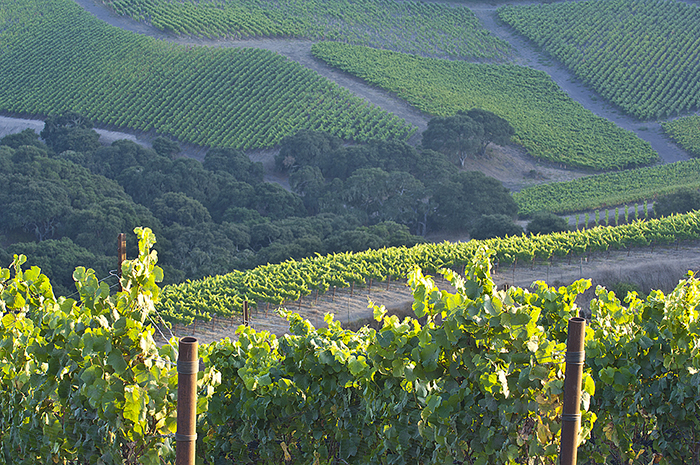 One of the appellation’s most picturesque and coldest vineyards, this estate is located in the southwest corner of Sta. Rita Hills, unsheltered from direct exposure to cold wines and marine fog from the Pacific. Vines wrap around the undulating hillsides in an almost 360 degree pattern. Planted in 2007, Radian has quickly become one of the new superstars of the AVA. Soils are very rocky with clay loam with generous amounts of diatomaceous earth. The austere soils combined with persistent coastal winds result in small clusters and tiny berries, leading to deep, concentrated wines.
One of the appellation’s most picturesque and coldest vineyards, this estate is located in the southwest corner of Sta. Rita Hills, unsheltered from direct exposure to cold wines and marine fog from the Pacific. Vines wrap around the undulating hillsides in an almost 360 degree pattern. Planted in 2007, Radian has quickly become one of the new superstars of the AVA. Soils are very rocky with clay loam with generous amounts of diatomaceous earth. The austere soils combined with persistent coastal winds result in small clusters and tiny berries, leading to deep, concentrated wines.
Rancho La Viña Vineyard
Sta. Rita Hills
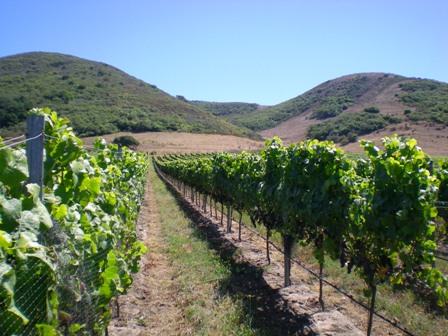 Rancho La Viña Vineyard is located at the far western edge on the south side of the Sta. Rita Hills appellation. Planted in 2005 on a gently sloped mesa several hundred feet above the valley floor, the site is fully exposed to the cool winds coming off the Pacific Ocean, making it one of the coldest Pinot Noir plantings in California. The marine influence and windy location along with low fertility sandy loam soils result in very small berries, which in turn give the wine its remarkably deep, dark color and intense flavors.
Rancho La Viña Vineyard is located at the far western edge on the south side of the Sta. Rita Hills appellation. Planted in 2005 on a gently sloped mesa several hundred feet above the valley floor, the site is fully exposed to the cool winds coming off the Pacific Ocean, making it one of the coldest Pinot Noir plantings in California. The marine influence and windy location along with low fertility sandy loam soils result in very small berries, which in turn give the wine its remarkably deep, dark color and intense flavors.
Rio Vista Vineyard
Sta. Rita Hills
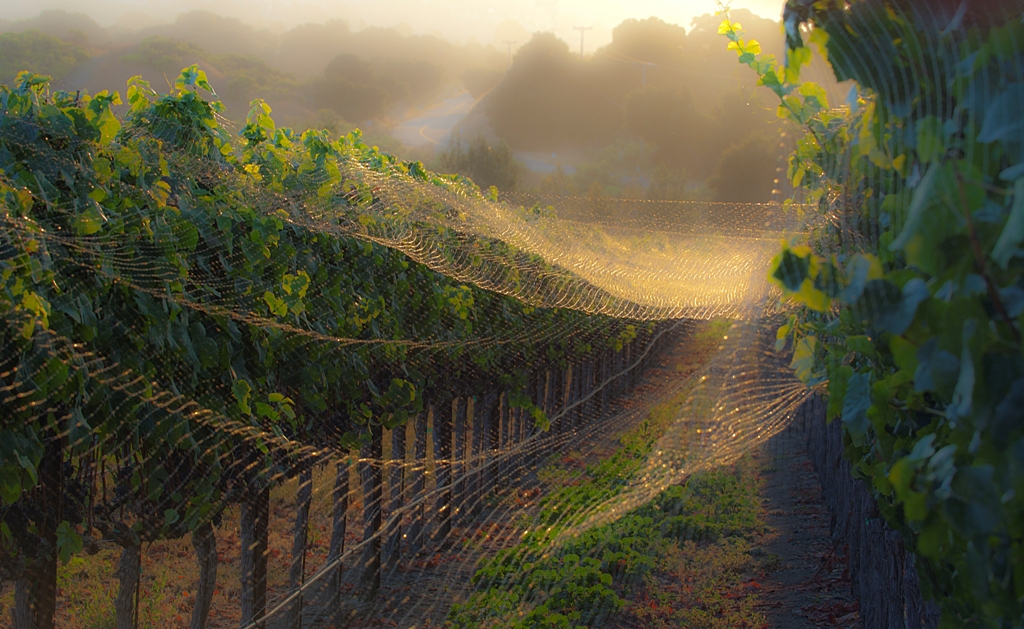 Ken Brown has worked with this meticulously farmed vineyard for many years. Planted in the early 2000s, Rio Vista is located at the southeastern end of the Sta. Rita Hills appellation. The slightly warmer microclimate results in luscious, ripe Pinot Noir. The dominate soils are limestone, sedimentary soils and a marine layer of sandy loam. The Pinot Noir clones planted on the estate include 777, 2A, 115, 667, 828, Pommard and Calera.
Ken Brown has worked with this meticulously farmed vineyard for many years. Planted in the early 2000s, Rio Vista is located at the southeastern end of the Sta. Rita Hills appellation. The slightly warmer microclimate results in luscious, ripe Pinot Noir. The dominate soils are limestone, sedimentary soils and a marine layer of sandy loam. The Pinot Noir clones planted on the estate include 777, 2A, 115, 667, 828, Pommard and Calera.
Sanford & Benedict Vineyard
Sta. Rita Hills
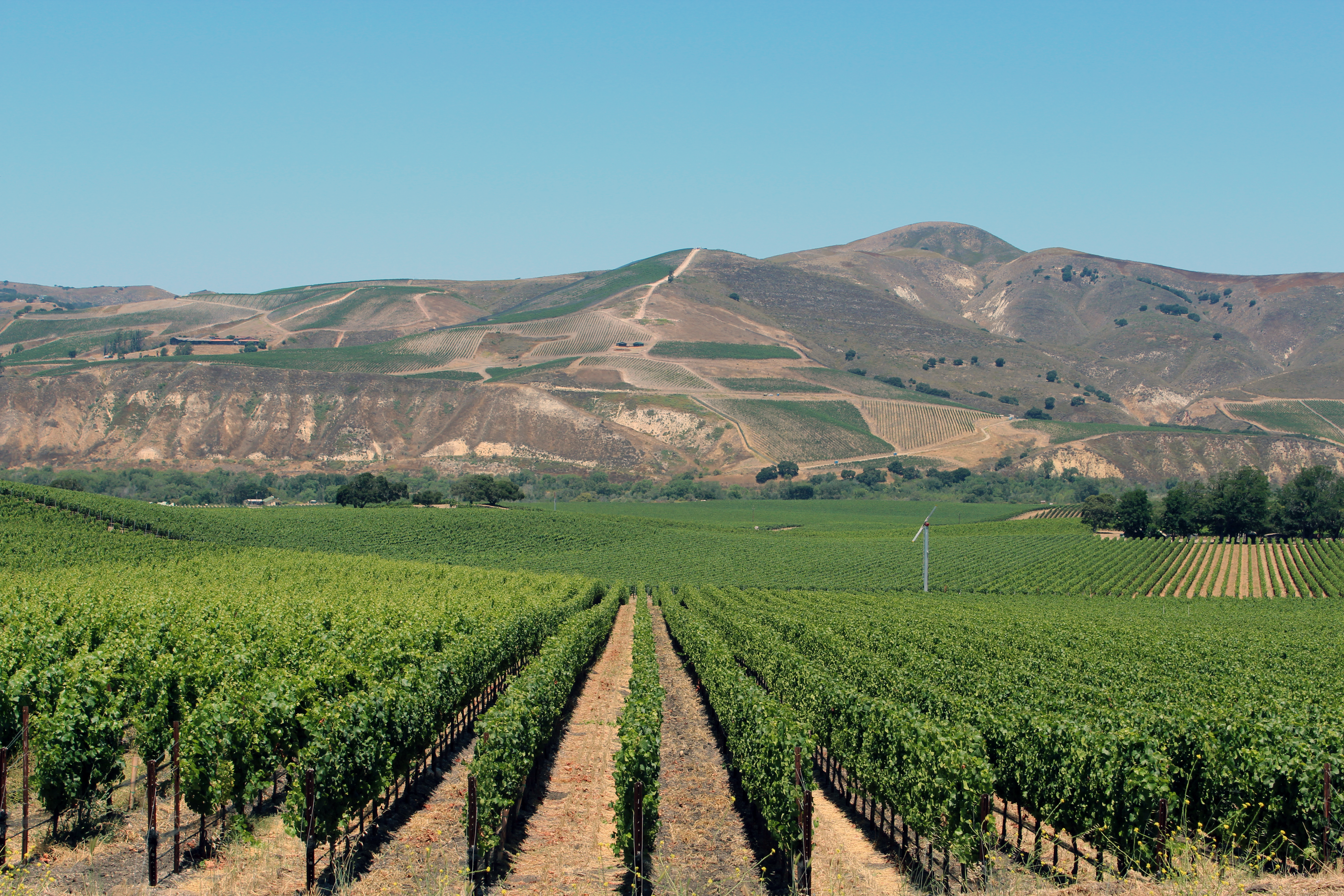 This vineyard is the birthplace of the Sta. Rita Hills appellation and played a significant role in bringing recognition to the great potential of the region. Planted by Richard Sanford and Michael Benedict in 1971, wines produced from this vineyard continue to set the highest quality standards. The soil type is the Botella Series, a composition of both clay and loam with a high calcareous content, which drains well and helps keep yields low. While about 50 acres of original plantings on their own rootstock are still farmed, other blocks have been replanted to top Pinot Noir clones, including 943 and 2A.
This vineyard is the birthplace of the Sta. Rita Hills appellation and played a significant role in bringing recognition to the great potential of the region. Planted by Richard Sanford and Michael Benedict in 1971, wines produced from this vineyard continue to set the highest quality standards. The soil type is the Botella Series, a composition of both clay and loam with a high calcareous content, which drains well and helps keep yields low. While about 50 acres of original plantings on their own rootstock are still farmed, other blocks have been replanted to top Pinot Noir clones, including 943 and 2A.
Thompson Vineyard
Alisos Canyon/Los Alamos Valley
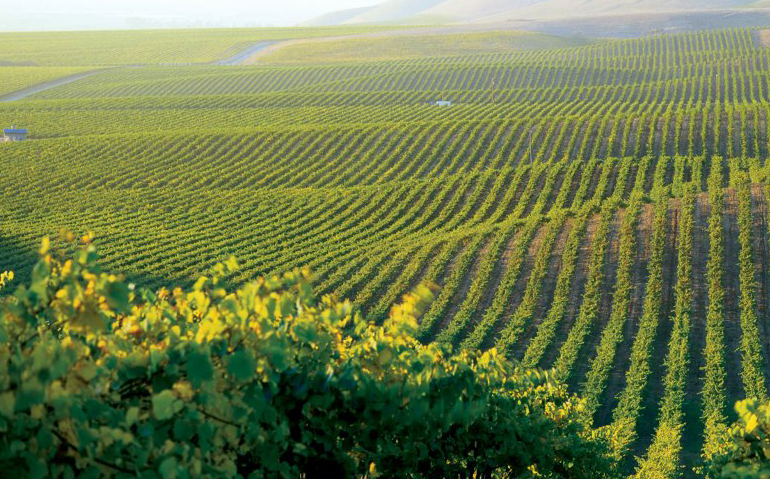 Planted in the late 1980s, Thompson Vineyard has a well-deserved reputation for outstanding Syrah. The vineyard is planted along the slopes of Alisos Canyon in the Los Alamos Valley. Vines are planted on their own rootstock to the highly regarded Estrella clone, which was propagated in Paso Robles. Soils are low nutrient sandy loam, which helps restrict yields and promote vineyard expression.
Planted in the late 1980s, Thompson Vineyard has a well-deserved reputation for outstanding Syrah. The vineyard is planted along the slopes of Alisos Canyon in the Los Alamos Valley. Vines are planted on their own rootstock to the highly regarded Estrella clone, which was propagated in Paso Robles. Soils are low nutrient sandy loam, which helps restrict yields and promote vineyard expression.
